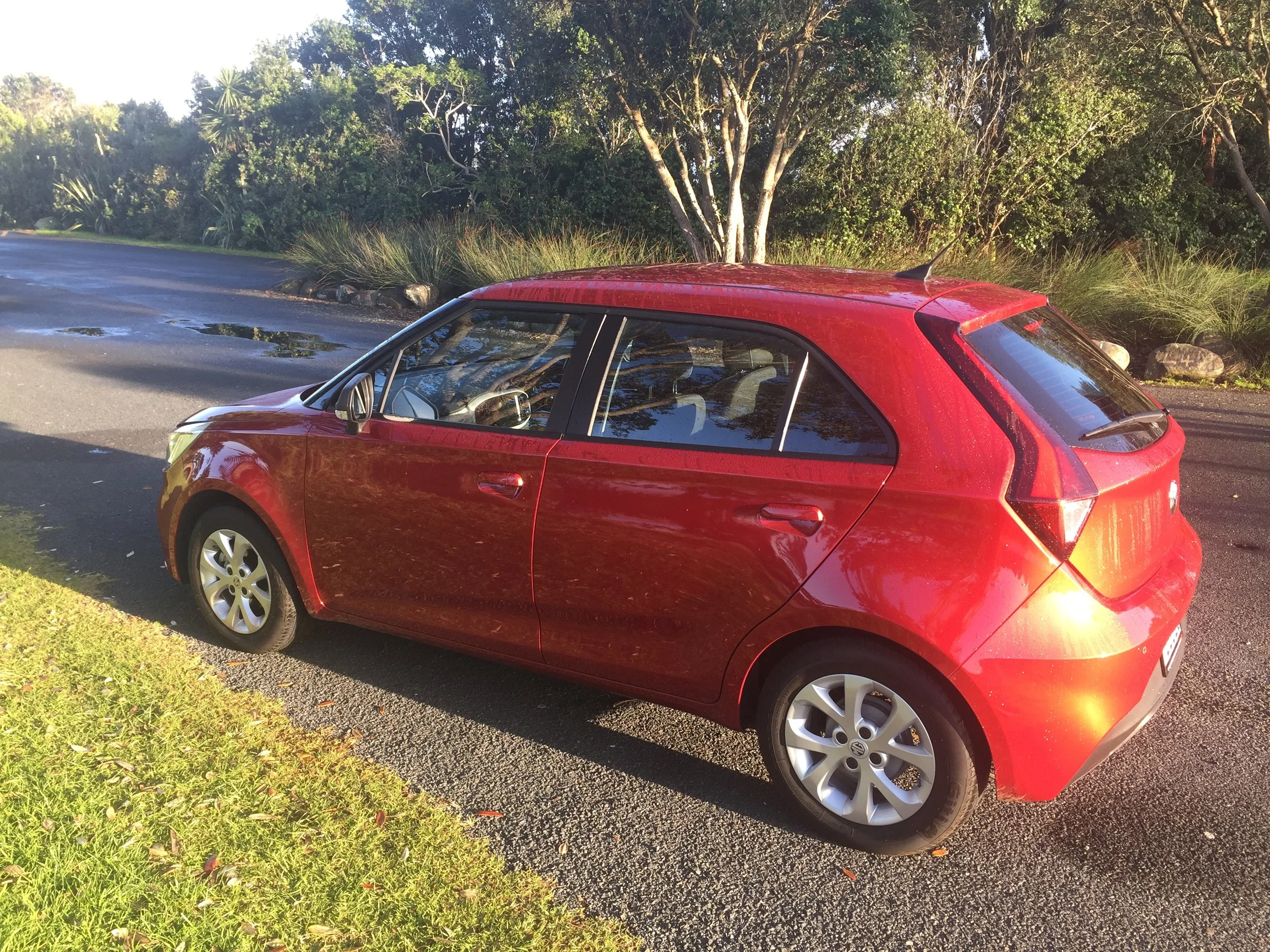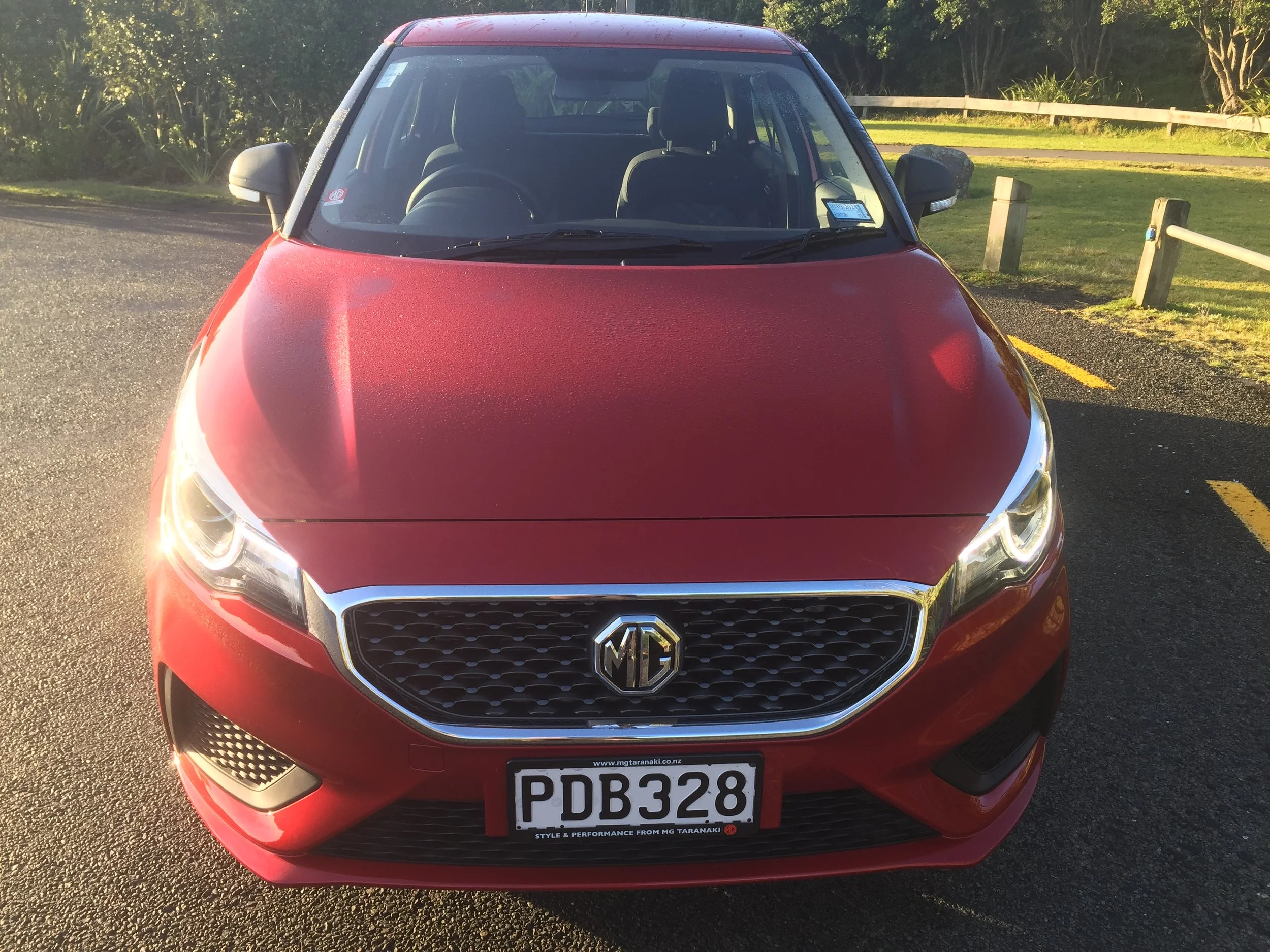MG3 Core hatchback roadtest review: Cheap and cost-effective
/Low price, a great warranty and, yes, some shortcomings.
Price: $19,990
Powertrain and economy: 1.5-litre four cylinder petrol, 82kW/150Nm, four-speed automatic, front-wheel drive, combined economy 6.7 L/100km, CO2 159g/km.
Vital statistics: 4055mm long, 1729mm wide, 1504mm high, 2850mm wheelbase, luggage capacity 307-1081 litres.
We like: Competes against used cars, warranty, build quality, spacious for size, rides and handles well.
Not so much: Bit of a slow-poke, no Clean Car rebate, lacks some active safety features, no ANCAP rating.
THIS from-China cutie lays claim as the country’s least expensive new car with an automatic transmission.
A $19,990 drive-away price is attractive, particularly as there’s an unlimited kilometres’ warranty, roadside assist and seven years’ free Warrant of Fitness checks.
However, as tested it is a bit thirsty with an official combined fuel economy exceeded by 0.2L/100km on test. The CO2 emissions count exempts it from a Clean Car rebate.
Meanwhile, a potential rival, the Mitsubishi Mirage in XLS auto format holds a special price of $19,990, averages 5.5 L/km and delivers low enough CO2 count to achieve a $2020 rebate. It also has a strong ANCAP safety score.
So which is the better buy? On-road costs have to be added to the Mirage’s price. It has a five-year/130,000km warranty which is pretty darned good for a small car.
To my mind, though, when it comes to pure motoring terms, the MG3 is the superior hatch. It is bigger and drives better, particularly on the open road. The MG has a conventional automatic, just a four-stage unit, yet I personally find it preferable to Mitsubishi’s continuously variable transmission.
The MG3 lacks active safety features requisite to it achieving a high safety rating. It is a relatively old vehicle, released in 2013, and although it has been facelifted twice since, including a very heavy update in 2018, it retains old technology. Hydraulic instead of electric power steering, for instance, prevents it from adopting electronic lane-keep assist.
New Zealand prioritises the Australian New Car Assessment Programme (ANCAP) for safety assessment. The MG3 originally held a Euro NCAP rating of three stars, out of five, from a test conducted in 2014, a score adopted by ANCAP. The Euro NCAP rating expired last year and is no longer valid. ANCAP also no longer allocates a rating. MG3 now holds a Vehicle Safety Risk Rating - for vehicles that don’t have an ANCAP or Used Car Safety Rating (UCSR) – also of three stars.
The MG3 features electronic stability control, emergency brake assist, active cornering brake control, ABS and six airbags, plus a warning chime sounds if the driver attempts to exit without first applying the handbrake. It lacks auto emergency braking, lane keeping assist, lane departure warning, blind spot monitoring and rear cross-traffic alert.
Should that level of safety should be expected in a vehicle priced at less than $20,000; is it cheap and cheerful – or cheap and nasty?
After a week of testing, I’m calling it cheerful. It’s a happy little thing, though one that shines brighter in the urban motoring environment than on the open road, where sheer lack of power manifests itself, though even then the MG3 is a well-sorted and secure drive.
Yet the normally-aspirated engine is not overly energetic and it has to work quite hard to move the 1170kg kerb weight. Rolling acceleration is rather sluggish, with the auto hunting through the ratios on most hills. All this must have an effect on consumption, though I saw much higher burn in urban driving than on the open road.
It appeals as an interesting five-door hatch that presents as a larger and more powerful vehicle than the Mirage or another potential foe, Kia’s Picanto. Its exterior dimensions and interior space underline that. It is longer and quite a bit wider than the competition, and the 2450mm wheelbase looks to be the best of the light car class.
The rear is distinguished by vertical tail-lights that extend might up to the roofline, and the front features a hexagonal grille between projector halogen headlights. The exterior styling is nice, if slightly conservative.
Inside, a cheerful feature is a tartan fabric on the seats. The front chairs are comfortable, there’s reasonable rear-seat room for a small car, and rear load space is surprisingly capacious.
Standard specification even at the entry Core level (MG3 is also available as an Excite model for $22,490) includes an eight-inch colour touch screen, height adjustability of the driver’s seat and steering wheel, air conditioning, rear park assist and reversing camera, and a four-speaker audio system with ‘Front Yamaha Sound Field’. One let-down is that the infotainment only accepts Apple CarPlay.
I appreciated the simple operability of the air conditioning; it’s an electronic representation of a gauge on the touch screen, the left part in blue (cold) and the right in red (hot). You simply use arrow prompts to set a needle to the preferred location. I also liked the steering wheel’s hefty thickness.
The MG3 represents a lot of car for not a lot of cash; in my view this factor allows it to reign as the best value hatchback on the market. It’s inexpensive enough to present as a strong contender against Japanese used imports, when the warranty is considered, though has also fallen behind newer product which, though more expensive, has turbocharging and superior safety kit.




















